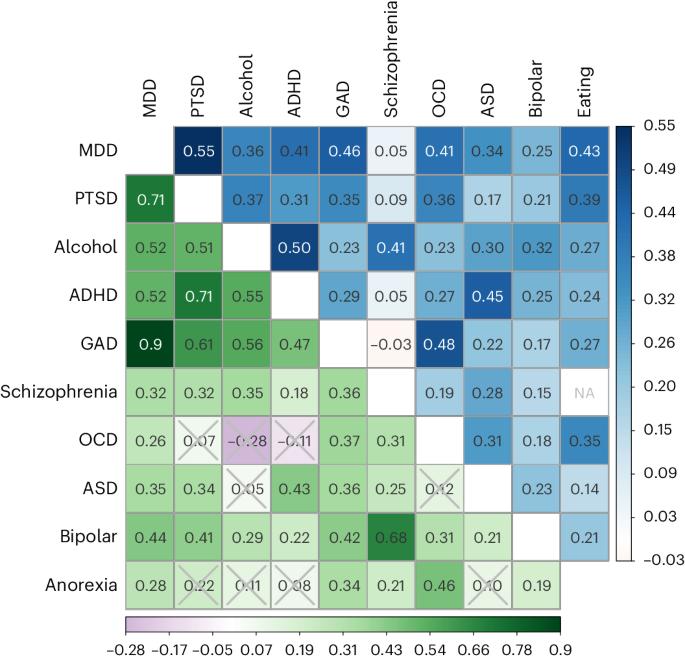Educational attainment and psychiatric diagnoses: a national registry data and two-sample Mendelian randomization study
引用次数: 0
Abstract
We investigate the causal relationship between educational attainment (EA) and mental health conditions using two research designs. Here we first compare the relationship between EA and 18 psychiatric diagnoses within-sibship in Dutch national registry data (N = 1.7 million), thereby controlling for unmeasured familial factors. Second, we apply two-sample Mendelian randomization, which uses genetic variants related to EA or psychiatric diagnosis as instrumental variables, to test whether there is a causal relation in either direction. Our results suggest that lower levels of EA causally increase the risk of major depressive disorder, attention-deficit/hyperactivity disorder, alcohol dependence, generalized anxiety disorder and post-traumatic stress disorder diagnoses. We also find evidence of a causal effect of attention-deficit/hyperactivity disorder on EA. For schizophrenia, anorexia nervosa, obsessive–compulsive disorder and bipolar disorder, the results were inconsistent across the different approaches, highlighting the importance of using multiple research designs to understand complex relationships, such as between EA and mental health conditions. Analyzing national registry data, the authors use within-sibling design and two-sample Mendelian randomization to identify bidirectional causal relationships between educational attainment (EA) and mental health conditions, demonstrating that lower levels of EA were differentially associated with some disorders, such as major depressive disorder, but that attention-deficit/hyperactivity disorder causally affected EA.

教育程度与精神病诊断:全国登记数据和双样本孟德尔随机研究
我们采用两种研究设计来探讨教育程度(EA)与精神健康状况之间的因果关系。在这里,我们首先比较了荷兰全国登记数据(N = 170 万)中 EA 与同胞兄弟姐妹中 18 种精神疾病诊断之间的关系,从而控制了未测量的家族因素。其次,我们采用双样本孟德尔随机化方法,将与 EA 或精神病诊断相关的基因变异作为工具变量,检验两者之间是否存在因果关系。我们的研究结果表明,较低的 EA 水平会增加患重度抑郁症、注意力缺陷/多动症、酒精依赖症、广泛性焦虑症和创伤后应激障碍的风险。我们还发现了注意力缺陷/多动障碍对 EA 产生因果效应的证据。对于精神分裂症、神经性厌食症、强迫症和双相情感障碍,不同方法得出的结果并不一致,这凸显了使用多种研究设计来理解复杂关系的重要性,例如 EA 与精神健康状况之间的关系。作者通过分析全国登记数据,采用同胞设计和双样本孟德尔随机法来确定教育程度(EA)与精神健康状况之间的双向因果关系,证明较低的教育程度与某些疾病(如重度抑郁症)有不同程度的关联,但注意力缺陷/多动症对教育程度有因果影响。
本文章由计算机程序翻译,如有差异,请以英文原文为准。
求助全文
约1分钟内获得全文
求助全文

 求助内容:
求助内容: 应助结果提醒方式:
应助结果提醒方式:


